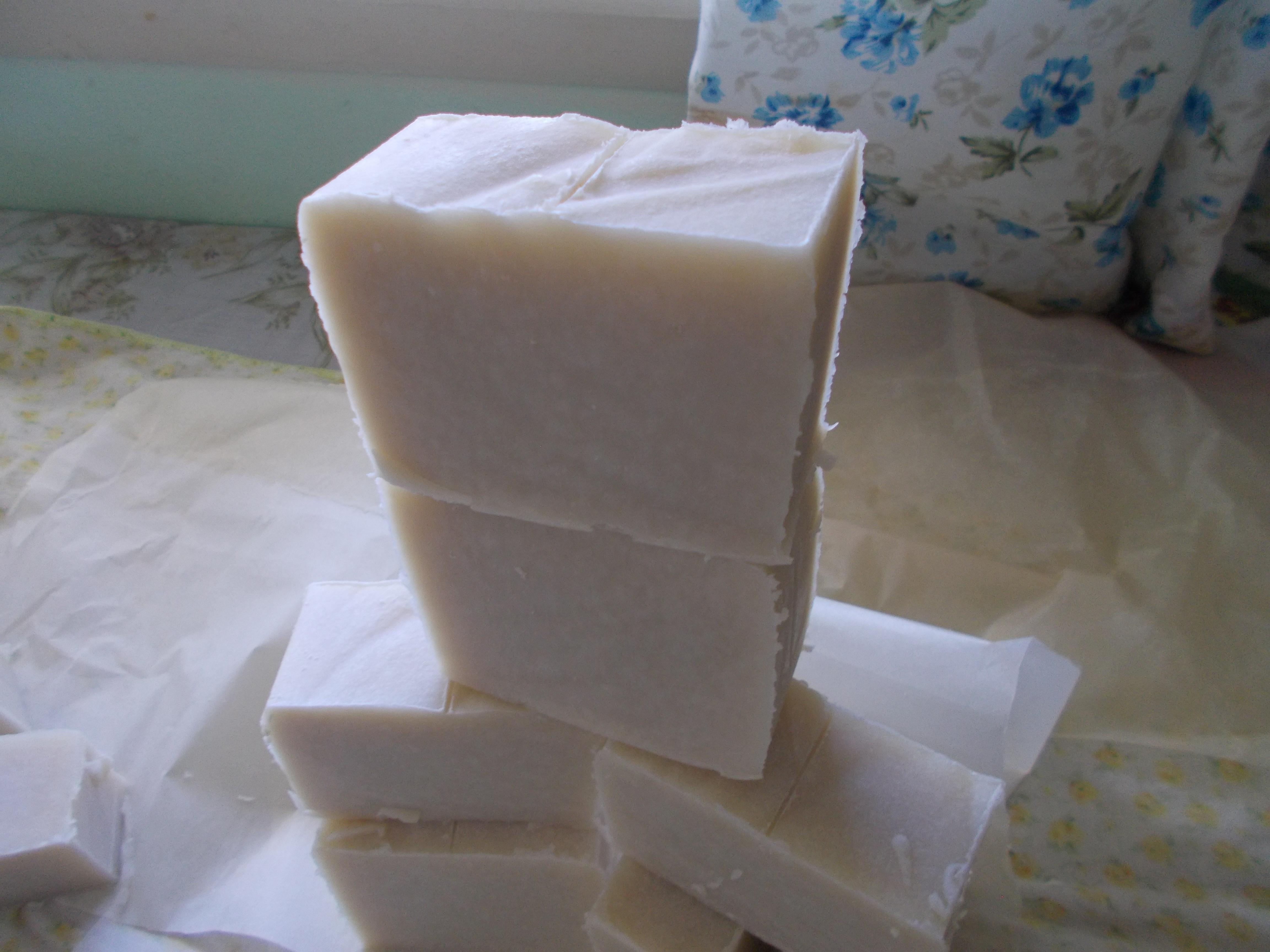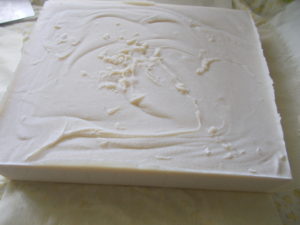Shea butter and Coconut Oil soap is very good for our skin. Shea butter accounts for at least 50% of total oils used in our shea butter and coconut oil soap. Shea butter is a fat from a nut that grows on the shea tree. Shea butter is edible and used in cooking and cosmetics. It is good to prevent lips from drying and cracking. A small amount of shea butter rubbed in the nostrils helps with congestion. I rub my children’s skin with shea butter after shower. I use it myself as well during winter. It helps my dry skin. Shea butter is my preferred butter to rub in my nose and my kids’ nose when we have cold. When the air is too dry, it helps us at night to breathe easily without our nose being too dry or stuffed.
Shea butter is also good in the hair. When making soap, shea butter contains many complex fats that don’t saponify. The final soap contains these shea butter’s fat, emollients for dry skin.
If you can make the soap yourself you can find the recipe below. It is a large batch of 7 lbs. of oils or a total of 10.6 lbs. of soap before curing or drying.
In my household, we use my handmade lye soap for shower, hand washing, and dish washing.
If you can’t or don’t have the time to make the soap, you can still purchase it in our store. I generally don’t have a lot of bars on hand for sale. I like to make each recipe unique. That is the beauty of handmade products. Each production is unique its own way. We don’t add additives, fragrances or colorant to our soap. My children and I have eczema and dry skin. Therefore, I am very careful on what goes on our skin.
Shea Butter & Coconut Oil Soap
Ingredients:
56.0 oz. Raw Unrefined Shea butter (50%)
56.0 oz. Organic Unrefined Cold Pressed Coconut Oil (50%)
42.56 oz. distilled Water
16.54 oz. Food Grade Sodium Hydroxide (NaOH)
Total oils is 112 oz.
Lye discount is 5%
Directions:
Weight the water and set aside.
Hear goggles and gloves. Weight the Sodium Hydroxide and take both the lye and the water outside or to a well ventilated area.
Carefully poor the lye in the water while stirring slowly with a wooden or silicone spoon.
Hold your breath and stir.
Step away to breath and return to stir the lye solution for few seconds.
Make sure pets and children steer clear from the lye solution.
Weight the coconut oil and pour in the soap pan and heat to medium heat to melt.
Weigh the shea butter and add to the coconut oil and melt both oils together. Stir the oils with a long spatula.
Once the oils are almost melted, turn the stove off and let the warmed oils melt the remaining solid oils.
Once all the oils are melted, put the google and gloves on and gently poor the lye solution in the soap pot on top of the oils. There is no need to let both the oils and lye solution to cool down to the same temperature. They can be warm. Just make sure the stove is off under the soap pot. The soap is cold process.
Stir the mixture together for few seconds.
Wash the lye solution container and its spoon with gloves on.
Wash the container used to weigh the oils.
Back to the soap mixture, stir gently with gloves and goggles on.
Stir for 5 minutes before stepping away. If the time is available, stir constantly for 30 minutes otherwise, stir time to time. Within one hour, the soap mixture would thicken up and ready to pour into the soap mold. If the mold can leak, wait for the soap mixture to be very thick before pouring.
Cover the soap mold. Let the soap undisturbed for 24 hours.
After 24 hours, touch the soap. If it is hard, take the soap out of the mop and cut in pieces.
Lay the bars in a ventilated area to dry for at least 3 weeks.
After 3 weeks, store the soap bars in a box where they can breathe and continue to dry.
The soap is ready to be used when it is at least 3 weeks old. The older the soap, the milder it is and the longer it lasts.



Leave a Comment